More than just a collection of athlete profiles, this varied anthology brings together insights and inspiration from, for, and about athletes of many LGBTQ identities, sports, and levels of sports involvement.
There are profiles of professional and Olympic athletes, to be sure, including tennis legend Billie Jean King, NFL player Carl Nassib, and soccer star Megan Rapinoe. Arguably more interesting, however, are the essays by fans and athletes themselves, from recreational to Olympian. They include Olympic figure skater Adam Rippon, a gay man; former NCAA swimmer and trans man Schuyler Bailar; NCAA runner and trans woman CeCé Telfer; but also athletes in lesser-known sports, including longboarding, sled dog racing, sailing, horseback riding and more. Several contributors, including co-editor Katherine Locke, share their experiences as nonbinary athletes. Co-editor Nicole Melleby looks at what the visibility of queer women in the WNBA has meant to her. And trans activist and journalist Karleigh Webb gives us a powerful, in-the-moment piece alternating between childhood memories of playing football and her more recent experiences playing in a women’s football league as an out trans woman.
All of the contributors seem keenly aware of the importance their stories may hold for readers not only as athletes and fans, but also as people. “There’s something inherently powerful about undermining stereotypes. About celebrating queer kids as strong, athletic champions on the field, in the rink, or in the pool,” write Locke and Melleby in the introduction. “We are everywhere, we deserve to be everywhere, and we can excel everywhere.”
In her own essay, Locke opines, “Loving a sport means you can learn to love yourself, too.” Contributor Isaac Fitzsimmons explains, “Water fitness has been so beneficial in helping me heal my relationship with my body as a queer person.” And longboarder Vincent Tirado notes, “A fixed gender identity is not a prerequisite for being yourself.”
The book acknowledges, though, that “Sometimes the sports we love might not love us back,” and offers insights into the challenges that LGBTQ athletes, particularly trans girls and women, often face. Several essays also look at the intersections of queerness, (dis)ability, and racial identity in sports.
Introductory matter includes “A Note on Pronouns” and “What Is Title IX? And Why Does It Matter?” The latter section includes a look at how, since January 2025, Title IX has not applied to trans athletes, and why we should fight to change that back. Helpfully, a QR code on the cover links to “the most current information about Title IX.”
Backmatter includes contributor bios; information on being a good teammate and ally; questions to ponder on “What Makes You Feel Strong?”; forming a Queer Athletics Alliance or Gay Straight Alliance at one’s school; and selected sources.
The editors acknowledge that although they tried to include athletes across a range of sports and LGBTQ identities, there are many more whom they didn’t have room for here. Let’s hope that means there might be a future volume (or volumes) with even more.
This is a terrific volume for any middle-grade (or even older teen) LGBTQ athlete, fan, or ally, and a must-have title for schools and libraries. Every youth coach should read it. All of the professional sports leagues that have Pride days should offer copies (either for sale or as giveaways—however they can structure it). As an athlete and fan myself, I admit my bias towards the content, but as a long-time reviewer of LGBTQ middle grade titles, I’d like to think I also know a key volume when I see it. This is one of them.
Content warning: The essay about Olympic rugby player Ellia Green notes that a high number of trans youth have considered suicide.






